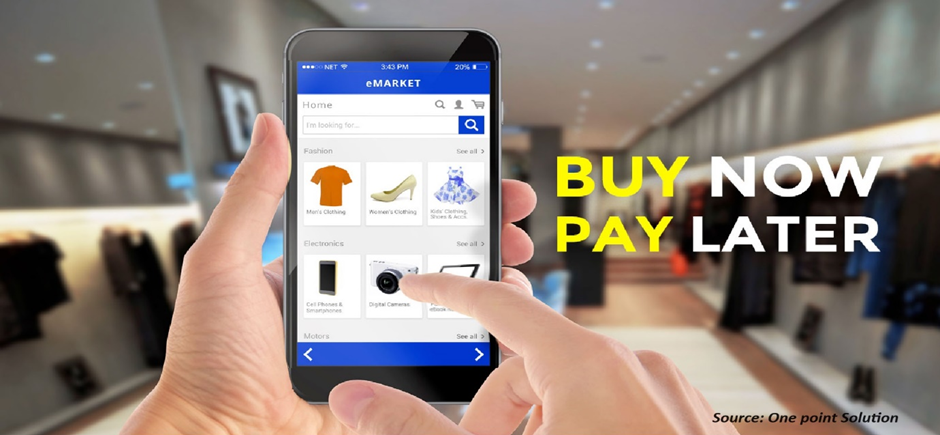
Mexico Mobile Payment Market by Age (Generation Z, Millennials, Generation X, and Baby Boomers), by Payment Type (Proximity and Remote), and by Application (Money Transfers, Merchandise Purchases, Bill Payments, Airtime Top-ups, Ticketing, and Others) – Opportunity Analysis and Industry Forecast, 2024–2030
Industry: ICT & Media | Publish Date: 01-Sep-2024 | No of Pages: 111 | No. of Tables: 79 | No. of Figures: 44 | Format: PDF | Report Code : IC2473
Mexico Mobile Payment Market Overview
The Mexico Mobile Payment Market size was valued at USD 2.37 billion in 2023, and is predicted to reach USD 6.63 billion by 2030, with a CAGR of 14.8% from 2024 to 2030. The mobile payment system, also known as money transfer, mobile money, m-payments, electronic payments, and digital payments, enables financial transactions through mobile devices such as smartphones, tablets, and wearables. These transactions occur through mobile apps or various methods such as proximity and remote transactions. Mobile payment systems include various types such as mobile wallets, mobile banking apps, and online payment services such as PayPal, Venmo, and Google Pay.
Utilizing technologies such as SMS, near-field communication (NFC), quick response (QR) codes, and others, these systems ensure smooth transactions while employing robust security measures including encryption and biometric authentication to protect personal and financial data. Praised for their convenience, speed, security, and integration with other financial tools, mobile payment systems experience widespread adoption. Additionally, users can configure payment apps to automatically settle bills, such as utility or credit card bills, ensuring efficient financial management and preventing late payments.
Rise of Cross-Border Transactions Propels the Mexico Mobile Payment Market Growth
The rise of cross-border transactions acts as a pivotal driver of market growth in the mobile payment industry in Mexico. As globalization accelerates, businesses and individuals increasingly engage in international trade, commerce, and remittances. Mobile payment solutions offer a convenient, cost-effective, and efficient way to conduct cross-border transactions, facilitating seamless money transfers and payments across borders.
With mobile payment platforms progressively supporting multi-currency transactions and offering competitive exchange rates, users can transfer funds internationally with ease, circumventing traditional banking intermediaries and their associated fees and delays.
Moreover, the integration of innovative technologies such as blockchain enhances the security, transparency, and speed of cross-border payments, further propelling adoption. As cross-border transactions continue to grow in volume and complexity, mobile wallet providers stand to benefit from expanding their global reach, driving market growth, and fostering financial inclusion on a global scale.
High Adoption of Smartphones Drives the Mexico Mobile Payment Market Demand
The widespread adoption of smartphones and the growing internet penetration play pivotal roles in driving the Mexico mobile payment market demand in the country. With smartphones becoming ubiquitous and internet connectivity expanding globally, a vast majority of consumers now possess the essential tools for mobile payments. Smartphones serve as convenient and portable payment terminals, enabling users to conduct transactions at their convenience, regardless of location.
Simultaneously, the increasing availability of internet access ensures seamless connectivity, facilitating secure and real-time payment processing. With an increasing number of consumers embracing smartphones and gaining access to reliable internet services, the potential user base for mobile payments witnesses a substantial expansion.
This trend not only enhances convenience and accessibility for consumers but also encourages merchants to adopt mobile payment solutions to accommodate evolving consumer preferences, thereby propelling the overall growth of the Mexico mobile payment market trends.
Resistance from Traditional Financial Institutions Restrains the Mexico Mobile Payment Market Growth
Resistance from traditional financial institutions presents a significant challenge to the growth of the mobile payment market in the country. Established banks and financial entities may perceive mobile payment solutions as disruptive to their existing business models, leading to reluctance in supporting or promoting these innovative technologies. This resistance arises from concerns about potential revenue cannibalization, regulatory complexities, and the perceived threat of losing control over payment infrastructures.
Consequently, traditional financial institutions may hesitate to invest in mobile payment initiatives or collaborate with fintech startups and mobile payment providers, impeding the development and adoption of innovative payment solutions. Overcoming this resistance necessitates collaboration, regulatory alignment, and education to demonstrate the benefits of mobile payments for both financial institutions and consumers, thus unlocking the full potential of the mobile payment market.
The Rise of Voice-Activated Mobile Payments Creates Opportunities in the Mexico Mobile Payment Market
The advent of voice-activated mobile payments heralds exciting opportunities within the market sphere in the country. These payment systems empower users to initiate transactions and conduct banking tasks through natural language commands, leveraging virtual assistants such as Amazon Alexa or Google Assistant.
This innovation brings unprecedented convenience, allowing users to perform payments hands-free and while on the move. Voice-activated mobile payments streamline the payment process, enhancing user experience and promoting accessibility, particularly for individuals with disabilities or limited mobility.
Furthermore, they unlock new possibilities for integration with smart home devices, wearable technology, and IoT ecosystems, broadening the scope and utility of mobile payment solutions. With continuous advancements in voice technology, the integration of voice-activated mobile payments into daily life presents promising prospects for innovation, distinction, and Mexico mobile payment market expansion.
Competitive Landscape
Various market players operating in the Mexico mobile payment industry include Alphabet, Inc. (Google), Alibaba Group Holdings Limited, Amazon.com, Inc., Apple, Inc., PayPal Holdings, Inc., Visa, Inc., Tencent Holdings Limited (WeChat), MasterCard International, Inc., Samsung Electronics Co. Ltd., Block, Inc., and others. These key players have adopted various strategies to strengthen their share in the Mexico mobile payment sector.
Mexico Mobile Payment Market Key Segments
By Age
-
Generation Z
-
Millennials
-
Generation X
-
Baby Boomers
By Payment Type
-
Proximity
-
Near-Field Communication (NFC)
-
Quick Response (QR) Code Payments
-
-
Remote
-
Internet Payments
-
SMS/Direct Carrier Billing
-
By Application
-
Money Transfers
-
Merchandise Purchases
-
Bill Payments
-
Airtime Top-ups
-
Ticketing
-
Others
REPORT SCOPE AND SEGMENTATION:
|
Parameters |
Details |
|
Market Size in 2023 |
USD 2.37 Billion |
|
Revenue Forecast in 2030 |
USD 6.63 Billion |
|
Growth Rate |
CAGR of 14.8% from 2024 to 2030 |
|
Analysis Period |
2023–2030 |
|
Base Year Considered |
2023 |
|
Forecast Period |
2024–2030 |
|
Market Size Estimation |
Billion (USD) |
|
Growth Factors |
|
|
Companies Profiled |
10 |
|
Market Share |
Available for 10 companies |
|
Customization Scope |
Free customization (equivalent up to 80 working hours of analysts) after purchase. Addition or alteration to country, regional, and segment scope. |
|
Pricing and Purchase Options |
Avail customized purchase options to meet your exact research needs. |
KEY PLAYERS
-
Alphabet, Inc. (Google)
-
Alibaba Group Holdings Limited
-
Amazon.com, Inc.
-
Apple, Inc.
-
PayPal Holdings, Inc.
-
Visa, Inc.
-
Tencent Holdings Limited (WeChat)
-
MasterCard International, Inc.
-
Samsung Electronics Co. Ltd.
-
Block, Inc.




 Speak to Our Analyst
Speak to Our Analyst

































